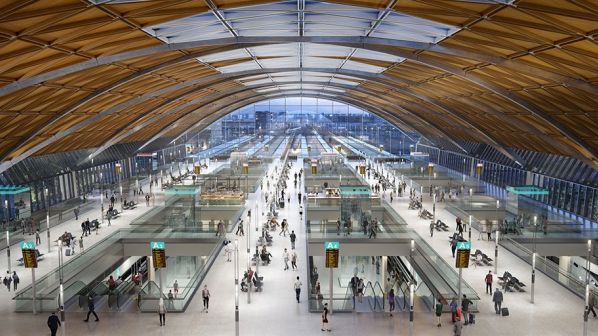THE British government has finally released its Integrated Rail Plan (IRP) for the North and Midlands, which confirms that the majority of the 198km eastern leg of HS2 will be axed in favour of upgrades to existing infrastructure.
Plans to build a dedicated high-speed line between Manchester and Leeds via Bradford as part of the Northern Powerhouse Rail (NPR) have also been rejected. The outcome has been suspected for many weeks and was all but confirmed following government leaks over the weekend of November 13.
While a disappointment to proponents of the eastern leg and NPR, including Ms Louise Gittins, interim chair of Transport for the North, the sub-national transport body, who describes the plan as “woefully inadequate,” the government says the £96bn plan is an “ambitious and unparalleled programme” to overhaul inter-city links across the North and the Midlands.
Proposed commitments in the plan include:
- construction of the 82km Phase 2B western leg of HS2 from Crewe to Manchester, including new stations at Manchester Airport and Manchester Piccadilly. The government favours redevelopment of the existing Piccadilly station by adding six surface platforms at the terminal station rather than an underground or through-station alternative which it says will reduce construction disruption and cut costs substantially. The western leg should include the Crewe Northern Connection, enabling trains to call at Crewe and re-join HS2
- a new high-speed line from the West Midlands to East Midlands Parkway, south of Nottingham. Plans to build a new high-speed station and line to Toton have been scrapped with a new station at Toton for local and regional services proposed instead
- completion of electrification on the Midland Main Line from Market Harborough to Leicester, Nottingham and Sheffield via Derby to support the operation of HS2 trains north from East Midlands Parkway
- upgrades to the East Coast Main Line, including the rollout of ETCS, power supply upgrades to support longer and more frequent trains, the increase of maximum speeds to 225km/h in some locations, and the removal of flat junctions and crossings
- construction of 64km of new high-speed line between Warrington, Manchester, and the Standedge Tunnel, near Marsden in West Yorkshire as the first phase of NPR. The remainder of the Manchester - Leeds - York Transpennine Main Line will be upgraded with “significantly longer” sections of three and four track, and electrified. Further electrification is proposed between Leeds and Bradford on the Calder Valley Line. ETCS will also be installed and improvements carried out Liverpool Lime Street, and Warrington Bank Quay
- work to identify the best way to take HS2 trains to Leeds station, including increasing station capacity
- upgrades to the Hope Valley Line, including electrification, to improve services between Manchester and Sheffield
- an allocation of £100m to start work on the West Yorkshire Mass Transit System, a proposed light rail, tram-train and bus rapid transit network for Leeds, and
- a £360m plan to introduce contactless tap in, tap out ticketing at 700 commuter stations in the midlands and the north.
The government says that the plans will more than double capacity between London and Manchester, and Manchester and Leeds, and more than treble capacity between Birmingham and Nottingham, Birmingham and Manchester and Liverpool and Leeds. It adds that many of the improvements will offer similar journey times to those proposed by building HS2 in full but earlier and cheaper than planned. For example, the Manchester - Leeds journey time will fall from 55 minutes currently to 33 minutes, Liverpool - Manchester Airport from 1h 11min to 26 minutes, London - Nottingham will fall from 1h 32min to 57 minutes, London - Leeds from 2h 13min to 1h 53min, and Birmingham - Nottingham from 1h 14min to 26 minutes.
Of the £96bn, the government says £54bn is spending on rail and local transport in the Midlands and the North with the remaining £42bn allocated for HS2 phases 1 and 2a from London to the West Midlands and Crewe, which is in addition to the £8.3bn already spent on HS2 up to March 2020. The government adds that IRP is not a complete list of planned rail investments for the north and midlands, stating that other “medium term capacity improvements” and proposals to reopen disused lines are separately funded.
On its decision to scrap the eastern leg, the IRP document says that unlike the western leg, there are credible options for upgrading existing sections of the network, which combined with sections of new line, give similar benefits for these markets as HS2 as well as places not currently served. It says the IRP core pipeline offers better value for money than the full high-speed line as it delivers significant benefit at lower cost. The government says the first NPR trains could run this decade compared with 2043 under the full build scenario. Significant improvements will be delivered for the Midlands and South Yorkshire by 2030, and for Leeds and the northeast in the 2030s.
“Our plan is ambitious, deliverable and backed by the largest single government investment ever made in our rail network,” says secretary of state for transport, Mr Grant Shapps. “It will deliver punctual frequent and reliable journeys for everyone, wherever they live.”
For detailed data in rail projects in Britain and around the world, subscribe to IRJ Pro.

